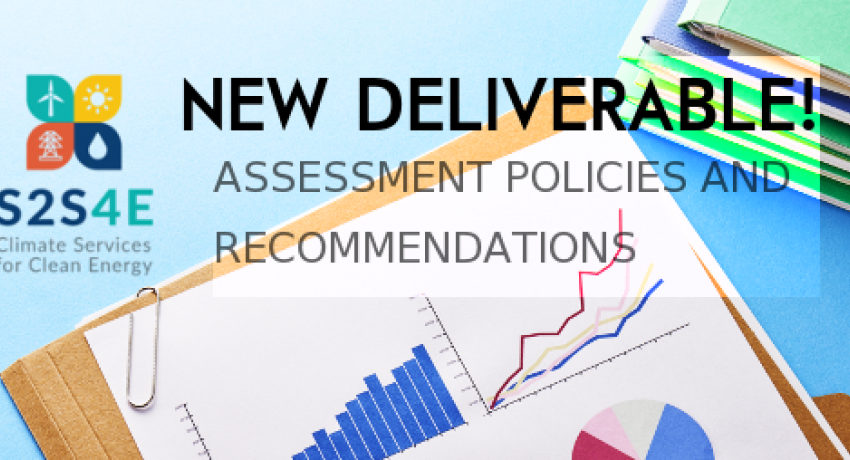Written by Daniele Kielmanowicz and Mathieu Salel, two innovation strategists at LGI, D6.2 had been submitted in November 2018. Titled “Assessment of policies and recommendations”, this report presents the results of the policy mapping, highlights main policy trends and suggests policy recommendations to support the uptake of sub-seasonal to seasonal (S2S) services.
D6.2 offers a mapping of existing measures (policies and interventions) that directly or indirectly influence the use value of S2S forecasts. It focuses on measures related to the energy sector and dealing with renewable energy production, transport and distribution, retail and consumption (including self-consumption). A first section presents the results of the policy analysis performed at EU level, covering the main EU energy-relative directives. A second section focuses on 117 national measures released in the countries of origin of the S2S4E project partners (France, Germany, Italy, Norway, Spain, Sweden, and UK). Finally, a third part suggests policy recommendations to better support the use of S2S based on observations.
Main findings of this deliverable
- At EU level, EU directives ruling the energy system appeared to be progressively more supportive to S2S forecasts, and more globally to weather and climate services. This conclusion draws on the observation of evolutions induced by the subsequent modifications of the EU directives over the last 20 years.
- The level of support to S2S and other climate services significantly increased. Notably, the reference to climate services became more explicit (use of the term “forecast”) and more detailed (ex: seasonal horizon targeted, probabilistic approach required, appointment of a responsible entity).
- The development of renewable energy sources remains the main policy objective for governments in Europe while the resilience of the energy system appears more as a second priority. At the national level, it was found that a clear majority of the policies analysed (69%) are dedicated to the promotion of renewables and therefore indirectly enhance the use of S2S to ensure the reliability of renewable energies.
- The results of the policy sourcing demonstrate that measures specifically designed to influence the use of climate services (including S2S) are still rare. Although most of identified policies in this study are dedicated to the promotion of renewable energies, a few examples of measures that directly support the use of weather and climate services (including S2S) in the energy sector were found in energy production, energy distribution and market regulation. These few examples confirm that a support to S2S at national level is possible and can be done at any step of the value chain. The evolutions observed at EU level suggest that a similar trend could also be initiated at national level in the near future.
- The current level of policy support to S2S can be considered as low, particularly at national level. However, and based on observed trends, a change in the near future can be expected. An important set of measures that aim at improving the European energy system were identified. All these measures support the same aim as S2S services, whether they are R&D programmes to increase the reliability or renewable energies, measures to increase the flexibility and resilience of the grid, develop energy storage or ensure the security of supply.
- Policies at national levels can be expected to evolve in the same way as the EU policy framework, suggesting that their direct support to climate services (including S2S) shall increase in the future. Indeed, the increasing share of renewables in the European energy mix is an important factor that will have to be more and more considered in new energy policies.
Written by Mathilde Bazin-Retours/ LGI.

